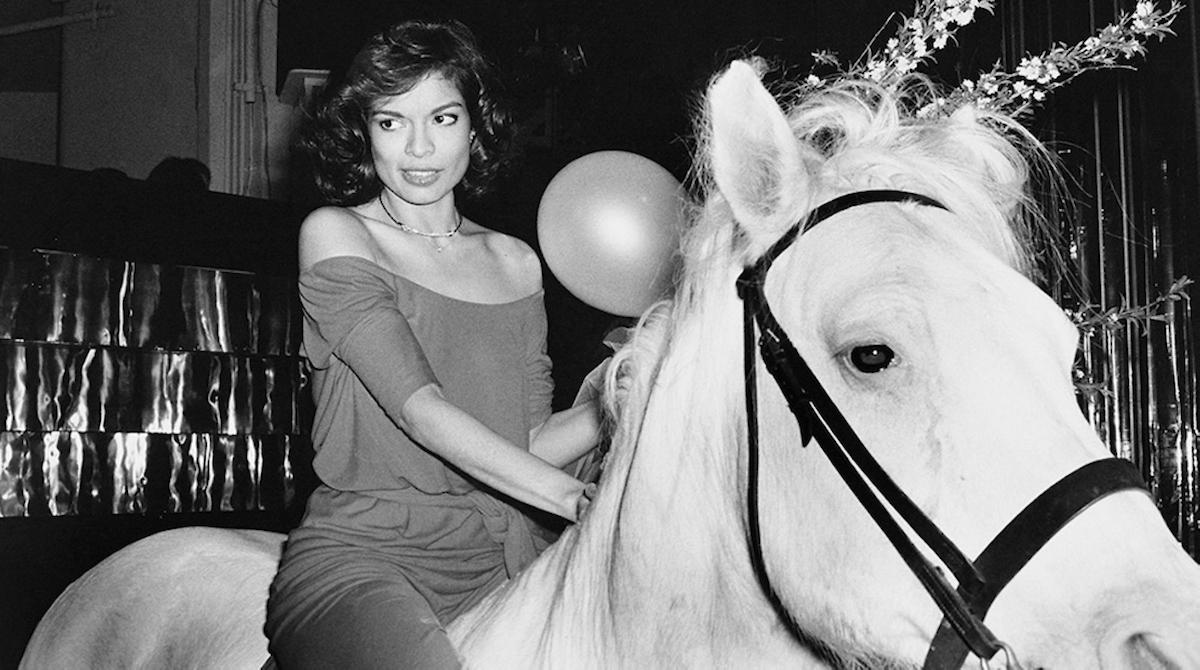Night magic: Photographing Studio 54’s wild parties
A new exhibition at the Brooklyn Museum looks back at the extravagant nights at New York’s most famous club

Your support helps us to tell the story
From reproductive rights to climate change to Big Tech, The Independent is on the ground when the story is developing. Whether it's investigating the financials of Elon Musk's pro-Trump PAC or producing our latest documentary, 'The A Word', which shines a light on the American women fighting for reproductive rights, we know how important it is to parse out the facts from the messaging.
At such a critical moment in US history, we need reporters on the ground. Your donation allows us to keep sending journalists to speak to both sides of the story.
The Independent is trusted by Americans across the entire political spectrum. And unlike many other quality news outlets, we choose not to lock Americans out of our reporting and analysis with paywalls. We believe quality journalism should be available to everyone, paid for by those who can afford it.
Your support makes all the difference.Although it was open for less than three years, from 1977 to 1980, the New York nightclub Studio 54 left a huge mark on club culture. Formerly an opera house and later a TV studio, the old studio stage was converted into a dancefloor, where Andy Warhol and Elizabeth Taylor rubbed shoulders with the young artists and drag queens who had been drawn to the city by cheap rents and a louche party scene.
Drawing inspiration from the black, latinx and gay nightclubs already established in the New York underground, Studio 54 brought their creative vivacity into the mainstream. The club quickly became famous thanks to its outrageous stunts – for one New Year party, organisers dumped four tons of glitter onto the dancefloor, and later staged a Dolly Parton performance with haystacks, donkeys and chickens. After the Vietnam War but before the Aids epidemic, an anything-goes creativity was in the air.
The nightclub is being celebrated by the Brooklyn Museum. Its current exhibition Studio 54: Night Magic, now on show after the museum closed in March due to the coronavirus, looks back on what made the club so special. “Studio 54 has come to represent the visual height of disco-era America: glamorous people in glamorous fashions, surrounded by gleaming lights and glitter, dancing ‘The Hustle’ in an opera house,” says Matthew Yokobosky, senior curator of fashion and material culture at the Brooklyn Museum. “Today the nightclub continues to be a model for social revolution, gender fluidity, and sexual freedom.”
The heart of the exhibition is club photography, capturing the beautiful faces and outrageous costumes gathered under the giant disco balls. Rose Hartman’s famous shot of Bianca Jagger at her 1977 birthday party, resplendent on a white horse, is a particular highlight. “It was the moment that changed my life,” Hartman recently told Forbes. “It was a shot seen across the world and it put Studio 54 on the map. [Jagger] got on the horse for a minute. Like that, boom! I grabbed my camera, an Olympus… it was dark. the disco ball is turning, spinning. Then I just took maybe two pictures. That’s it.”
The show also includes the work of Dustin Pittman, who started his career photographing Warhol’s Factory stars and went on to work for Calvin Klein and Karl Lagerfield. He captured the show-stopping outfits of the club: a costume made entirely of red balloons; a man in skimpy chainmail; artist Richard Gallo swathed in quilted satin.
Every party must come to an end, and Studio 54 closed in typically scandalous style in 1980 after the owners were arrested for tax evasion. New York continues to evolve, but as rents rise further beyond affordability, pushing out many of the people who would have been the Studio’s typical clientele, Night Magic seems a timely reminder of what made the city so attractive and exciting in the first place.
Studio 54: Night Magic is showing at the Brooklyn Museum until November 8, 2020



Join our commenting forum
Join thought-provoking conversations, follow other Independent readers and see their replies
Comments